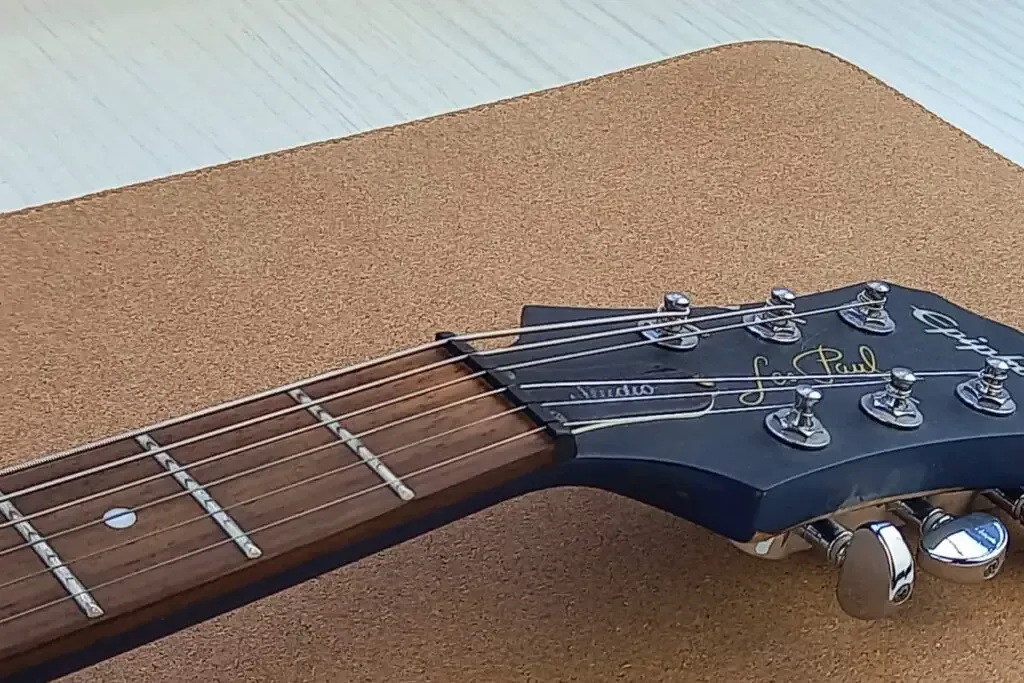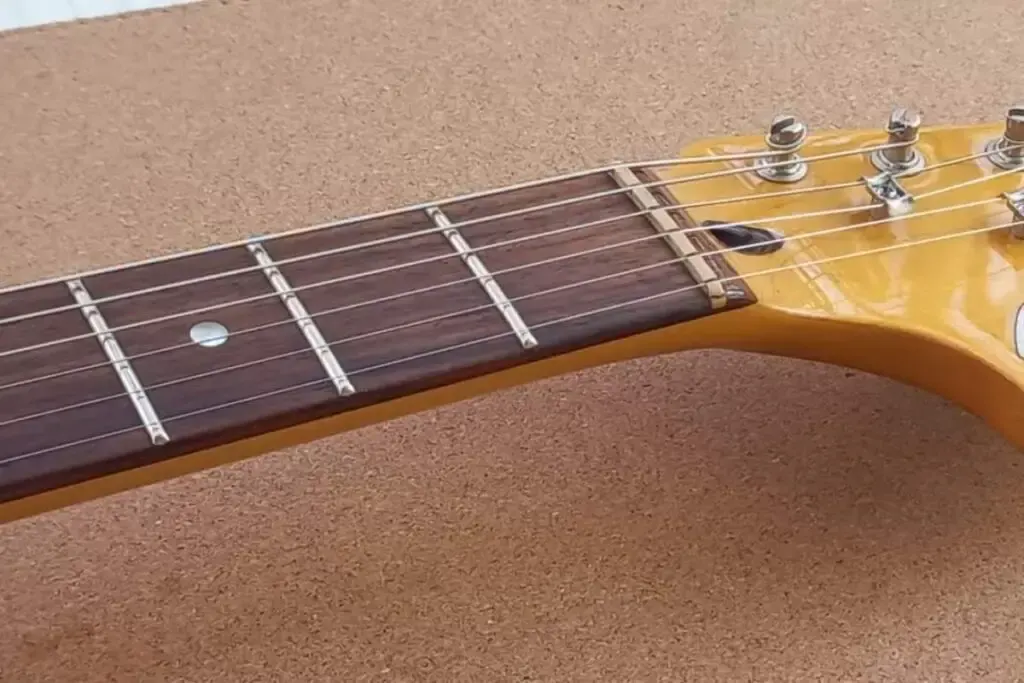Take a look at the top of your guitar and you’ll see a thin strip of material where the headstock ends and the fretboard begins. That’s the guitar’s nut. While it’s easily overlooked, the nut is an essential part of your guitar.
But, not all guitar nuts are made the same. The material it’s made from, and how well it’s designed, can have a large effect on the tone, tuning, and playability of your guitar.
Let us then take a look at what I believe to be the most overlooked and underappreciated parts of a guitar – and why you should pay more attention to it!
What’s a guitar nut?
Your guitars nut marks the end of the headstock and the start of the fretboard, but what does it do?
Firstly, it keeps your guitar strings in place. The slots on the nut hold your guitar strings in place and, along with the saddles, help to keep your strings an equal distance apart. So, when you fret a note or play a chord, your strings won’t slide around and go out of tune.
On that point, it’s important to use the right sized guitar strings for your nut. If you use a thicker string gauge, then your strings might rest on top of the nut instead of in it!

Secondly, the guitar nut also raises your strings off your fretboard – again, working with your guitar’s bridge. Having the right sized gap between the fretboard and strings is essential for getting a crisp, clear tone from your guitar. Otherwise, you can end up with problems like fret buzz or dead notes.
The guitar nut also affects your guitar’s tuning and intonation. A good-quality, well designed, and clean nut will keep your guitar’s tuning consistent by allowing the strings to move through it without resistance. A nut slot with tight or dirty slots can cause your strings to snag, causing tuning problems and can eventually lead to your strings snapping. Likewise, a poorly fitted or loose nut can play havoc with your intonation.
Finally, it has a big impact on your guitar’s tone and sustain. There’s a wide range of different materials used for guitar nuts out there, which I’ll cover shortly. Each one responds to string vibrations in a different way which can affect how your guitar sounds.
Locking guitar nuts
Some guitars have a special type of nut called a locking nut. These clamp your strings into place to keep them in tune. Locking nuts are most common on guitars with Floyd Rose bridges!
What is a guitar nut made from?
From tone and sustain, to the tuning stability and intonation, the material of a guitar’s nut has a big impact on the overall sound of the guitar. Here’s some of the more common materials that guitar nuts are made from, and how they affect the sound.
Plastic guitar nuts
Plastic is the cheapest material used to make guitar nuts and is most often found on cheaper, entry level guitars. As it’s cheaper, it’s more likely to deform and misshape over time which can cause.
Another problem is that they’re often poorly designed – made quickly for mass market consumption.

Tonally, plastic sounds quite flat and dull. It’s my least favorite material for a nut (in case you can’t tell!). Again, this isn’t a problem if you’re a beginner, but if you’re looking to play live or in the studio, you might want to consider another option.
My Epiphone Les Paul has a plastic nut, and it’s the only thing that I don’t like about it!
Bone guitar nuts
Bone is one of the most common materials out there for a guitar nut. It’s seen on both professional and quality entry-grade guitars alike. These nuts are made from animal bone, most often from a cow.
Most of my guitars have bone nuts, and I think they’re great. To my ear, bone nuts add a little bit of high-end that helps a guitar to really sing and standout.

If you want the sound, but don’t like the idea of using actual bone, then there are ethical bone-alternatives that are designed to feel and sound like bone. TUSQ is the most common ethical alternative. It’s a dense plastic made to mimic the tonal properties of bone and ivory, giving the crisp high end characteristics of traditional bone.
Graphite guitar nuts
Graphite nuts are a newer design of nut, made from the same thing as your pencils.
It’s a great material for a nut, because it’s self-lubricating – meaning that your string won’t snag or catch at the nut. This offers superior tuning stability and intonation! You’ll often find graphite nuts on guitars designed for shredding!
Tonally, graphite nuts sound a bit duller than bone but are still leaps and bounds above plastic.
Metal guitar nuts
Finally, we have metal guitar nuts. These are mostly either brass or steel, and are much less common than the other materials listed above.
They provide superior durability, as they’re harder to wear down and they have a much brighter, bell-like tone.
Check out this great video that compares different nut materials and their sounds.
Replacing a guitar nut
If your nut has become damaged, or you just want to swap it with another material, then you can replace your guitar’s nut.
It’s actually one of the cheapest parts for a guitar, coming in under $15 for the premium models. But, the catch is that you’ll need to get a professional to make the change.
Replacing a guitar nut is a tricky job, especially for a newbie guitarist. The nuts are usually glued in and need to be careful removed using specialized tools.
I need the nut replacing on one of my guitars, and I’ve been quoted £90 (around $115). Again, 90% of this cost is the luthier’s time and labor.
Still, if you’re having problems with your guitar’s tuning or open string buzz that are caused by the nut, it’s a worthwhile investment. It also gives you the added benefit of improving the tone of your guitar!
Final thoughts on guitar nuts
Though it may seem small, your guitar’s nut has a huge impact on the tone and tuning of your guitar. I’d argue that it’s one of the most overlooked pieces of the guitar by players.
A bad nut can cause no end of problems, like fret buzz and intonation issues to name a few. Taking care of your nut, by using the proper gauge strings and keeping it lubricated will help you get a better tone out of your guitar.

Conor is a music producer, multi-instrumentalist, and all-round enthusiast from the UK with over 15 years of experience. He’s the founder and sole-content creator for the roundtable audio blog and YouTube channel.
